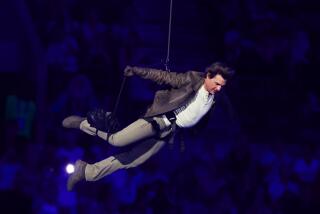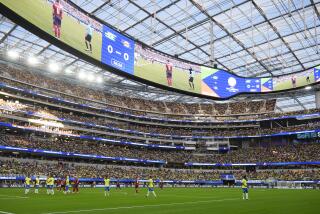Roll over, Lenin: Red Square is transformed by the World Cup
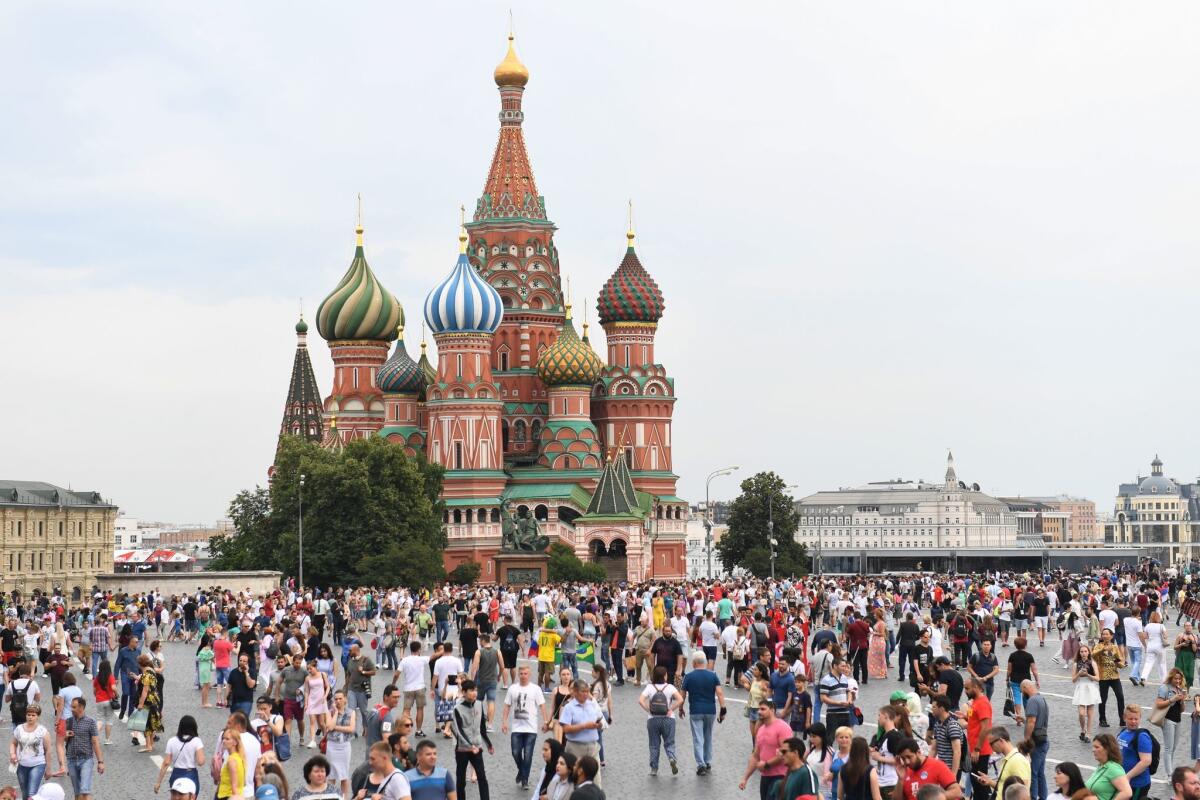
Reporting from Moscow — On most days, Red Square, with the imposing Kremlin lining one side and the multicolored domes of St. Basil’s Cathedral at its base, is as quiet as it is majestic.
The tourists who stop by tend to be reverent, while the locals generally avoid the place altogether, sticking to the side streets. But for the last three weeks, the square has felt like the center of the world, or at least the center of the World Cup.
Since the soccer tournament began this month, tens of thousands of people have packed the square and surrounding streets each day, filling the nearby restaurants and pubs to overflowing. They come wearing the jerseys of dozens of national teams, carrying flags, singing songs and speaking more than two dozen languages.
It has been a brightly colored block party with no beginning and no end.
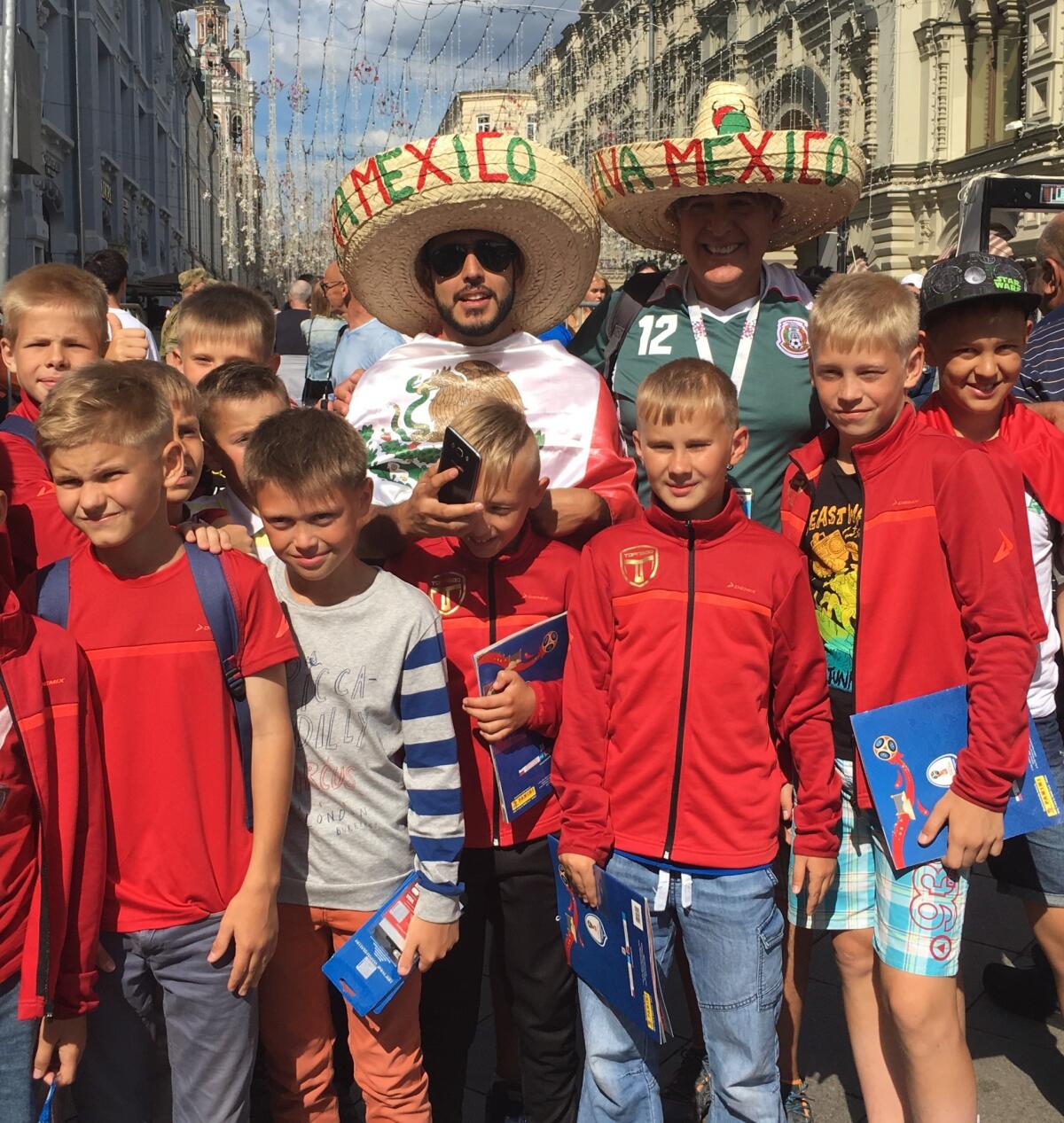
“Amazing,” said Will Ngui, who clutched an Australian flag in his hands but had a Russian one painted on his right cheek. “There’s so many countries. Everyone’s here, everyone’s enjoying themselves. This place is fantastic.
“It’s the World Cup. It’s about celebrating each other’s cultures.”
The Russian hosts, perhaps buoyed by their team’s success, have enthusiastically joined the party.
Sergei Gagarin, a bald and buoyant man who lives in Oryol, a city about 200 miles southwest of the capital, made his way through the thick crowd. He was carrying a banner featuring the flag of every World Cup team, hoping to get a fan from each country to sign it. By midday Monday he was missing only Senegal and Iceland.
“We love it. We think it should be like this all the time,” said Larisa, Gagarin’s wife of 37 years.
In recent years, as Russia has shut itself off from the West, international tourism to Moscow has fallen. Even fewer visitors make their way to Oryol, so the Gagarins came to the capital to experience the excitement.
“We should have more of this, meeting each other and talking to people from other countries so we can understand each other,” Larisa Gagarina said. “We are all the same. We just have different governments.”
The couple watched the crowds file by from a restaurant table along Nikolskaya Street, a pedestrian promenade connecting Red Square and the cross streets in front of the former KGB building, which houses Russia’s current state security services. The street, once lined with blocks of Soviet-style apartments, has been gentrified in recent years and is now full of shops, sidewalk cafes and hotels.
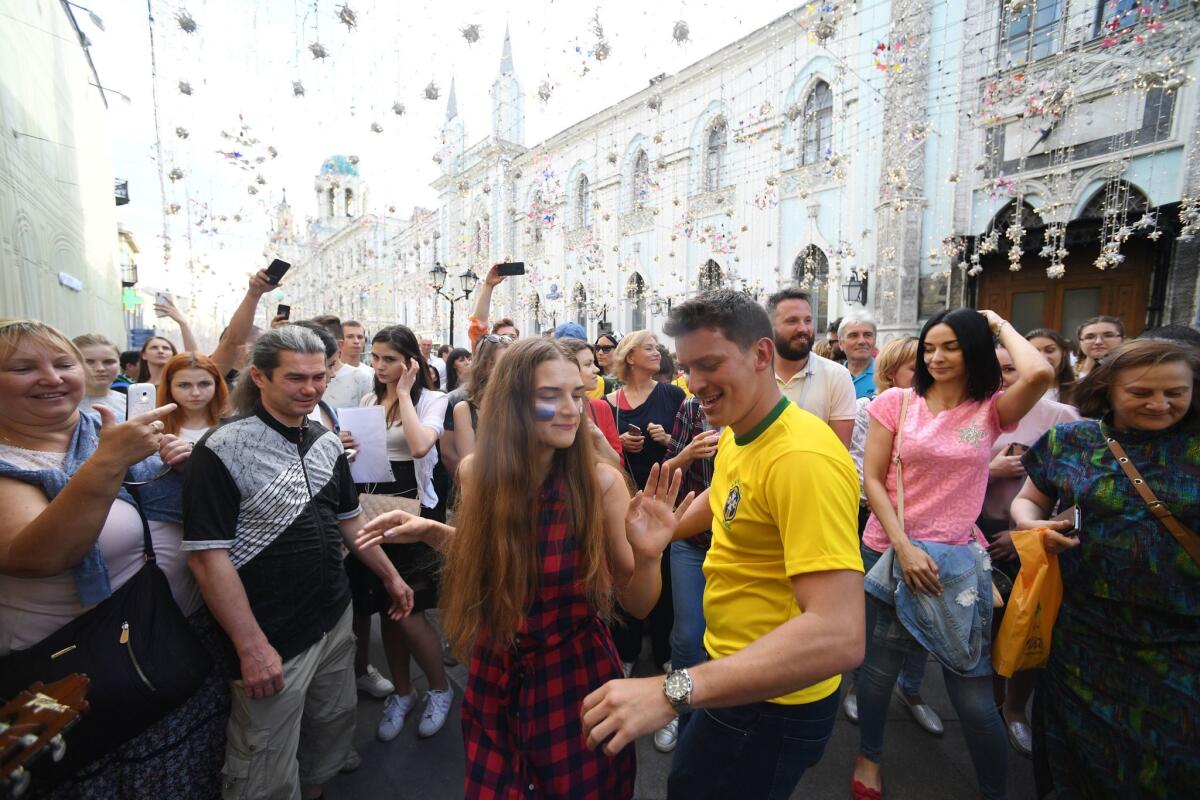
At night it becomes an undulating sea of nationalities — Russians dancing with Brazilians, Mexicans talking and gesturing with South Koreans, Peruvians taking selfies with Egyptians. Moscow police, who usually strictly enforce laws prohibiting drinking in the street, stand on the sidelines keeping watch but letting the party continue.
“It’s a new country. And we didn’t know about it too much,” said Henriette Cabrera, a 25-year-old Mexican fan. “But when we got here we really liked the culture, the people.… Everybody wants to take pictures. It’s nice to see people from other cultures and get to know them.”
For the most part, the fans and tourists have been polite and cordial, said Tatiana, a city worker taking a break in the shade to have a cigarette. She and her colleague, Lyudmila, declined to give their last names, saying their boss might not like them talking to a reporter without permission.
“The mood here is very good and it’s contagious, but we’re exhausted,” Tatiana said. The two women said they were working 11-hour shifts sweeping the streets during the World Cup.
“For the most part, the foreigners are very cultured and don’t throw trash on the ground like our people do,” Lyudmila said. “They even pick up their cigarette butts.”
Still, with thousands of people crowding Nikolskaya Street each day and temperatures reaching into the mid-80s this week, weaving in and out of the crowd with brooms and emptying the trash cans have become a challenge, the women said.
“They smile at us and try to say ‘spasibo,’” Lyudmila said, using the Russian word for thank you. “But they can’t speak Russian, so we haven’t had much of a conversation with any of them.”
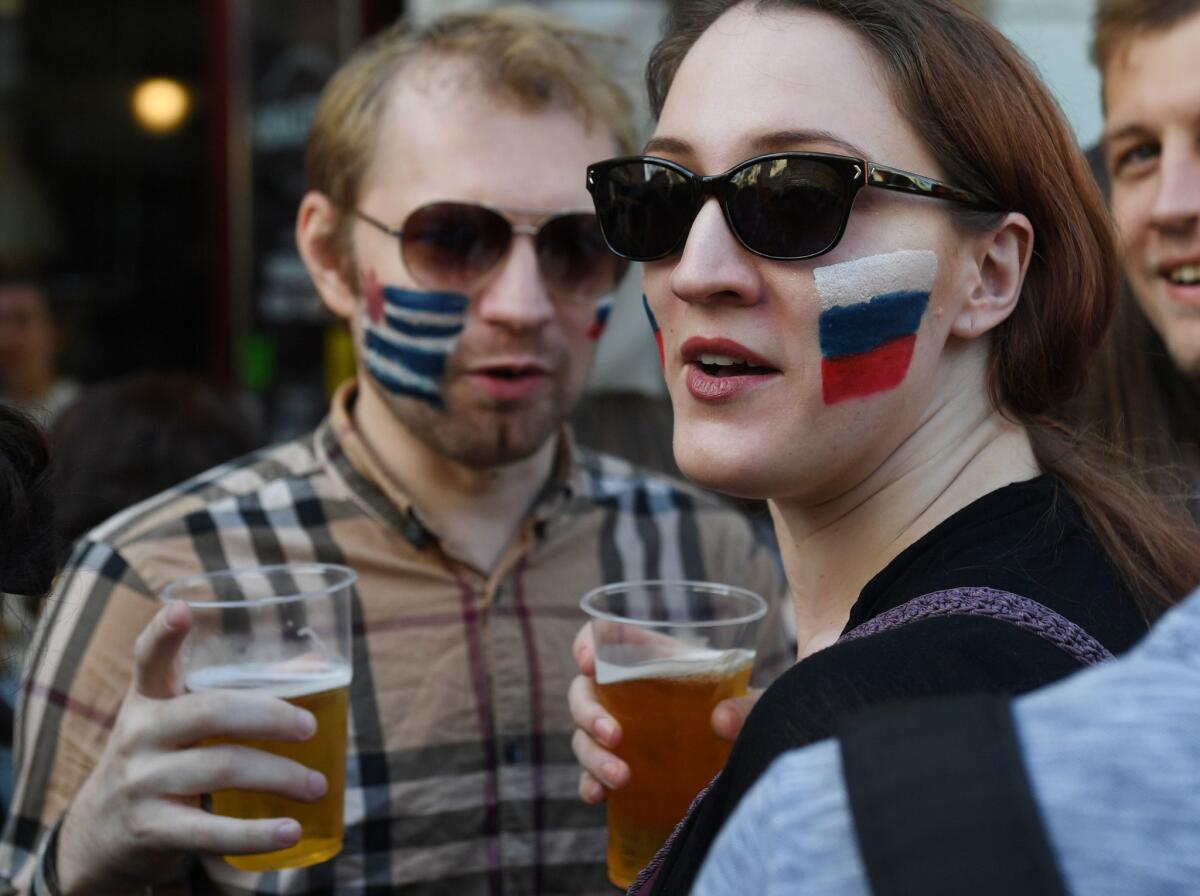
The World Cup is good for everyone, especially businesses and the economy, the two workers said.
“It’s good for people to see Russia and see that we aren’t that bad here,” Lyudmila said.
Maybe. But when the tournament ends and the fans leave next month, Red Square and the adjoining streets will empty, the Gagarins will return to Oryol, where they rent out vacation cabins, and Tatiana and Lyudmila will return to their regular work schedules — without helpful tourists picking up their own cigarette butts.
And many of those who were here will go home with more than souvenirs.
“The spirit of the festival and the World Cup environment,” said Jhaled Amr, an Egyptian fan from Cairo, “is amazing.”
Ayres is a special correspondent.
More to Read
Sign up for Essential California
The most important California stories and recommendations in your inbox every morning.
You may occasionally receive promotional content from the Los Angeles Times.
